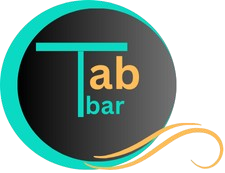Windows Explorer is the backbone of file management on every PC. While it does its job, it often feels plain and limited when compared to modern productivity tools. That’s where QTTabBar comes in. More than just adding tabs, it gives you a toolbox for customization—from themes and colors to toolbar layouts and shortcuts.
Also Read: Boost Your Productivity with QTTabBar: Tips and Tricks
In this article, we’ll explore how to personalize QTTabBar so that your Windows Explorer feels like your own. By the end, you’ll know how to make Explorer faster, more intuitive, and even visually appealing, all while boosting productivity.
Why Customize QTTabBar?
Customizing QTTabBar isn’t just about aesthetics. It’s about building a workflow that works for you.
- Boost efficiency with toolbars and shortcuts.
- Reduce clutter by tailoring Explorer to your habits.
- Enhance navigation with colors, themes, and tab layouts.
- Make it enjoyable — an Explorer that matches your personality or brand.
Whether you’re a professional juggling complex projects or a casual user who wants smoother navigation, customization makes a huge difference.
Exploring the Settings Window
The settings window in QTTabBar is the control center for all customization.
What you’ll find here:
- Appearance options for tabs and toolbars.
- Behavior settings for navigation, previews, and grouping.
- Shortcut management for hotkeys.
- Plugins/extensions integration.
Pro tip: Before diving in, export a backup of your current settings. This way, if something goes wrong, you can easily revert.
Customizing Tabs
Tabs are the most visible part of QTTabBar, and they’re highly customizable.
Ways to personalize tabs:
- Change colors: Assign unique colors to tabs based on folders (e.g., blue for work, green for personal).
- Adjust size and font: Make tabs larger for visibility or smaller to fit more at once.
- Pinned tabs: Keep important folders always open at the start of Explorer.
- Tab order: Drag tabs into custom positions for consistency.
Example workflow:
Color-code “Projects” in red, “Downloads” in blue, and “Documents” in gray so you can identify them instantly.
Toolbars: Building Your Productivity Hub
QTTabBar lets you create and modify toolbars with shortcuts, commands, and custom icons.
Popular toolbar customizations include:
- Navigation buttons: Up one level, back, forward.
- Quick folder access: Add a button to your most-used directories.
- File actions: New folder, refresh, or run custom scripts.
- App integration: Launch apps like Photoshop or Excel directly from Explorer.
Pro tip: Avoid overloading the toolbar. Start with 4–6 essential shortcuts.
Icons and Themes
Want to give Explorer a modern or branded look? QTTabBar supports themes and icons.
- Themes: Adjust colors, gradients, and tab styles.
- Icons: Replace default folder and toolbar icons with custom designs.
- Dark mode integration: Match QTTabBar with Windows dark theme.
Example: Designers can add minimalistic icons, while businesses can brand Explorer with company colors.
Custom Commands and Scripts
QTTabBar allows power users to add custom commands and scripts to the toolbar.
Examples:
- A script to back up files to a specific folder.
- One-click compression of selected files.
- Direct launch of command prompt or PowerShell in the current directory.
- This transforms Explorer into a productivity powerhouse tailored to your unique tasks.
Keyboard Shortcuts for Efficiency
Don’t forget about shortcuts—one of QTTabBar’s most powerful features.
Customization options include:
- Assigning hotkeys for tab switching.
- Creating shortcuts for opening/closing groups.
- Mapping actions like refreshing or pinning tabs.
- Example:
- Ctrl+Alt+T = Open a new tab
- Ctrl+Shift+1 = Open your primary project folder
- This eliminates clicks and speeds up your workflow.
Layout and Window Behavior
- QTTabBar gives you control over how Explorer windows behave.
- Open new folders in the same tab, a new tab, or a new window.
- Define whether tabs open in the background or foreground.
- Decide how previews behave when hovering.
- These small tweaks reduce interruptions and make navigation seamless.
Saving and Sharing Configurations
- Once you’ve built your perfect Explorer setup, you can save and share your configuration.
- Export your settings as a backup.
- Share your custom layout with team members.
- Import on another PC for consistency across devices.
- This is especially useful in collaborative environments where teams rely on uniform workflows.
Troubleshooting Customization Issues
Sometimes customizations may not work as expected. Common fixes include:
- Toolbar not visible: Check toolbar settings and restart Explorer.
- Icons not applying: Ensure correct icon format (.ico).
- Performance lags: Disable unused features or plugins.
- Settings reset after restart: Reapply settings and save the configuration file.
QTTabBar’s community forums and documentation are also great resources for advanced troubleshooting.
Frequently Asked Questions (FAQs)
1. Can I reset QTTabBar to its default settings if I customize too much?
Yes. QTTabBar has a reset option in its settings. You can also restore from a backup configuration if you saved one earlier.
2. Do themes and custom icons slow down Explorer?
No. QTTabBar is lightweight, and visual customizations don’t significantly affect performance unless you overload it with plugins.
3. Can I apply different customizations for different user accounts?
Yes. Each Windows account has its own QTTabBar configuration, so you can personalize Explorer individually.
4. How do I find or create custom icons for QTTabBar?
You can download .ico files from icon libraries online or design your own using tools like IcoFX or ConvertICO.
5. Is it possible to share my QTTabBar customization with teammates?
Absolutely. Export your configuration file and share it. Others can import it to mirror your setup instantly.
Conclusion
QTTabBar isn’t just about adding tabs to Explorer—it’s about creating a personalized workspace that matches your needs and style. From tabs and toolbars to themes, icons, and scripts, every element can be customized.
By taking the time to fine-tune QTTabBar, you’ll transform Windows Explorer from a basic file manager into a powerful productivity hub that feels truly yours.
